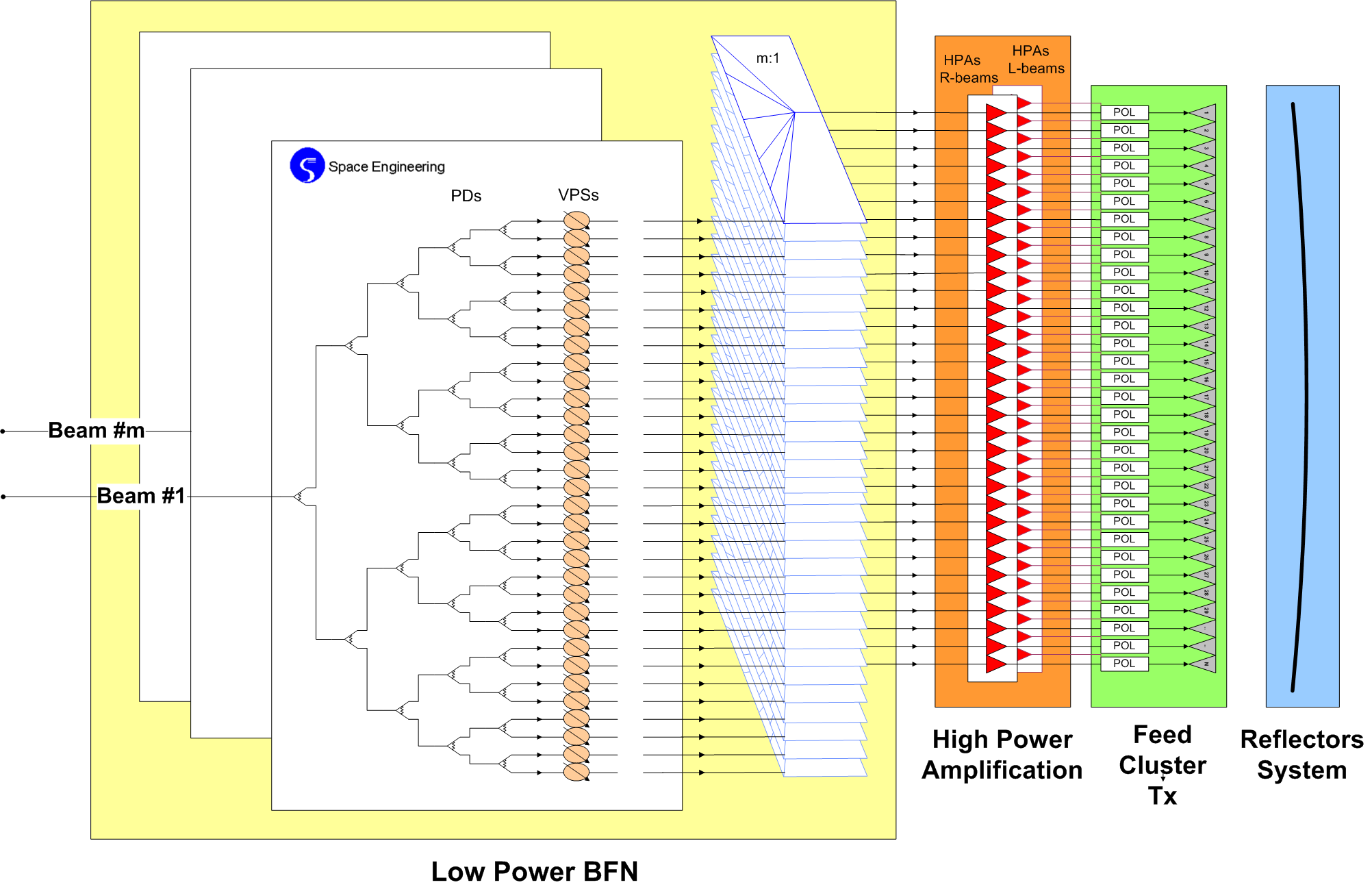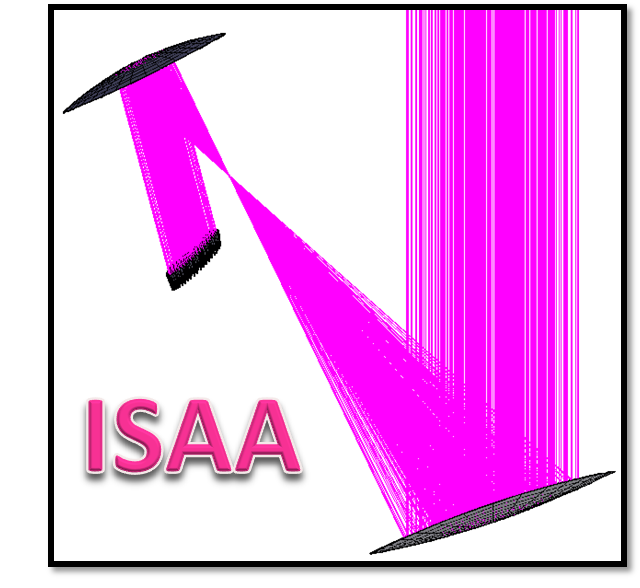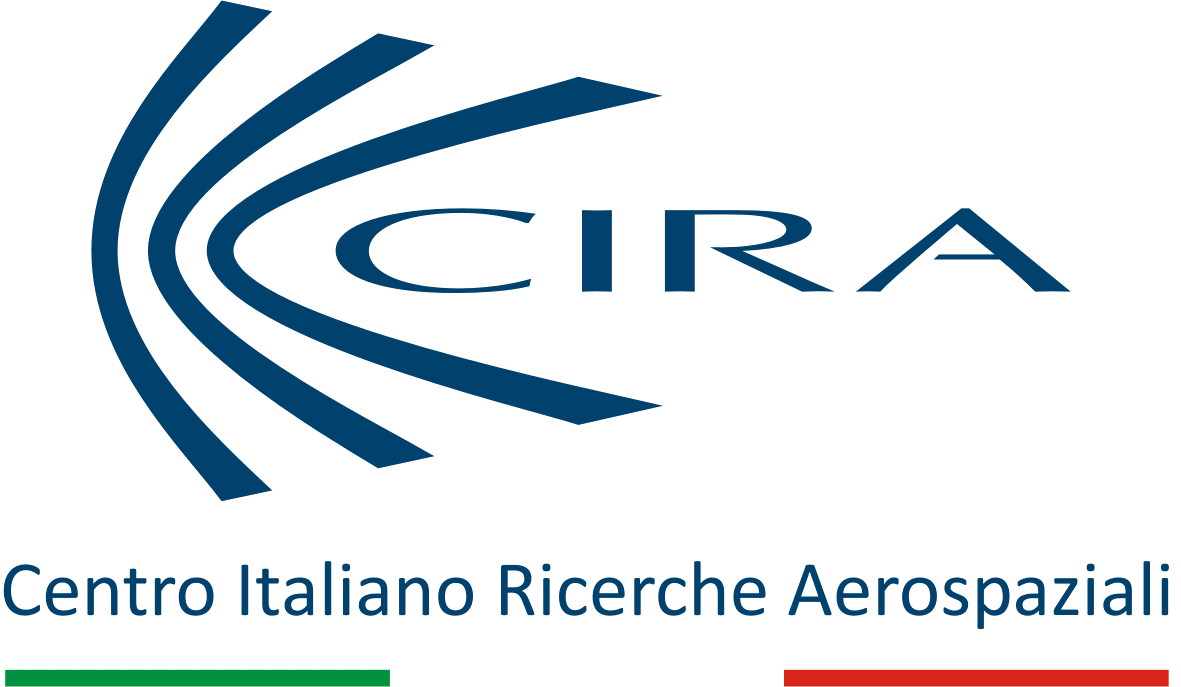PAGE CONTENTS
Objectives
The main objective of this activity is to demonstrate the performance of an Imaging Antenna system combining aperiodic feeding arrays with one or more reflectors, in transmit and receive modes, for the generation of a multiple beam coverage with only one antenna for geostationary broadband satellite communication systems in Ka-band. Moreover the design, manufacturing and RF test of antenna critical breadboard elements is also requested.
Challenges
During the project several challenges have been faced and solved adopting state of the art solutions like:
- design, manufacturing and testing of an innovative Imaging antenna demonstrator;
- assessment by CIRA of an innovative Additive Layer Manufacturing process, i.e. the Electron Beam Melting (EBM) process, for the manufacturing of the critical breadboard.
System Architecture
The system architecture implemented in the overall detailed antenna design is shown in the figure below for the Tx antenna. Similar architecture for the RX antenna, with LNAs instead of HPAs:

The system architecture foresees several BFNs, each one corresponding to the generated reconfigurable beam. The BFNs are connected to the radiating elements by combiners.
Since the multi-beams BFN is placed before the power amplifier section, all the BFNs exhibits low power characteristics.
Plan
The program has been divided in two phases:
- Phase 1 dedicated to the selection of the mission scenario, the consolidation of the requirements and the detailed design of the imaging antenna configuration associated with sparse/aperiodic feeding arrays;
- Phase 2 dedicated to the design, manufacturing and testing of the imaging Critical Breadboard.
Current Status
All the activities foreseen for the Phase 1 and Phase 2 of the contract have been carried out.
The RF measurement results achieved with the ISAA Critical B/B are really very good as compared with the simulations. The effectiveness of the selected imaging Confocal Ka-band TX/RX antenna solution, associated with sparse/aperiodic array feeding system, seems to be demonstrated for reconfigurable national/continental coverage missions.


